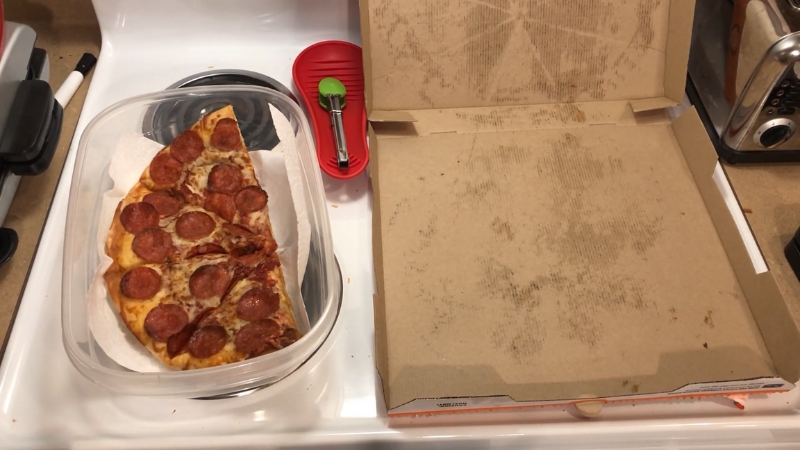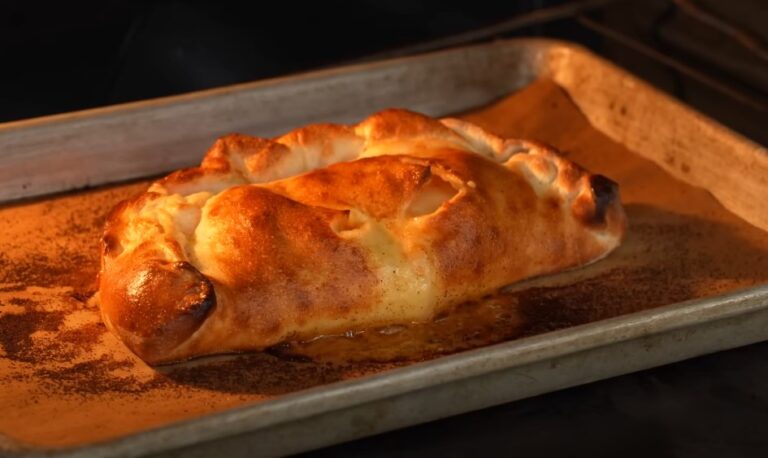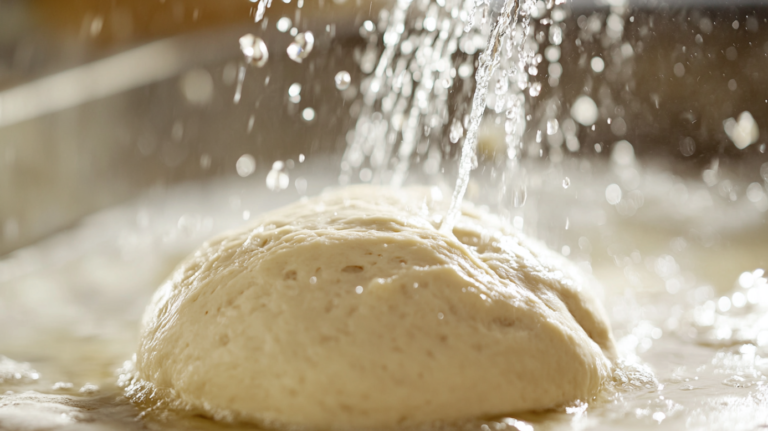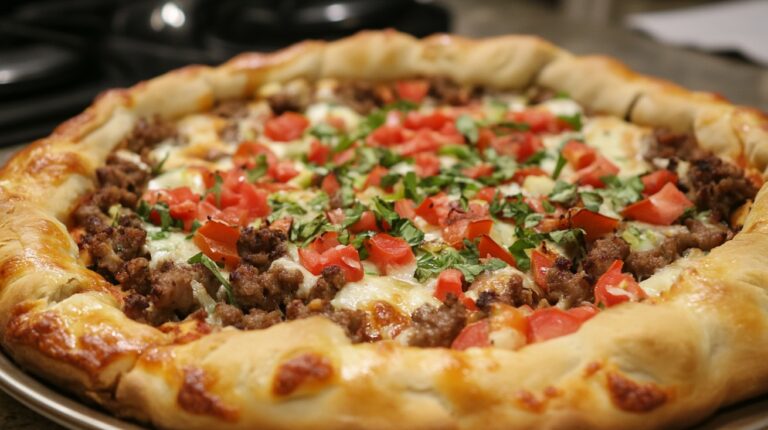Picture this: You’ve just demolished half a pizza, your belly is full, and the couch is calling your name.
The remaining slices sit on the table, forgotten in a food coma. Hours later, hunger strikes again.
You stare at the pizza, questioning everything. “Can I still eat this? Or am I about to play stomach roulette?”
Table of Contents
TogglePizza, Meet the “Danger Zone”

No, not the song from Top Gun—we’re talking about the temperature range that turns food into a bacteria breeding ground.
The “danger zone” is 40°F to 140°F (4°C to 60°C), and it’s where bacteria throw a wild party, multiplying like crazy.
Pizza, especially with cheese, sauce, and meats, isn’t immune to bacterial growth. It might look fine, but after sitting out for too long, it’s a ticking time bomb for food poisoning.
How Long Before Pizza Becomes Unsafe?
- Under 2 hours – You’re good. Eat up!
- 2 to 4 hours – Borderline risky. Maybe, maybe not. Feeling lucky?
- Over 4 hours – Nope. Toss it. Don’t argue.
- Overnight? – You’re not a raccoon. Don’t eat it.
Let’s be real—if it’s been sitting out since last night, you don’t need a scientific study to tell you it’s a bad idea. But hey, let’s entertain some common arguments anyway.
“I’ve Eaten Leftover Pizza That Sat Out All Night, and I Was Fine”
@rosereisman Is it safe to leave pizza out overnight and eat it the next day??🍕 Believe it or not, after just 2 hours at room temperature you’re entering the danger zone for bacteria. Just because you’ve done it and been ok doesn’t mean you should. I’d love to hear your thoughts on this! Drop a comment ⬇️ and let me know what you think! . . . #rosereisman #rosetip #cookbookauthor #chefathome #nutritionist #nutrition #nutritiontip #pizza #leftovers #foodstorage #foodsafety ♬ original sound – Rose Reisman
Ah yes, the classic rebuttal. Maybe you did survive that questionable slice at 3 AM. But here’s the thing: just because you didn’t get sick once doesn’t mean it’s safe every time.
Foodborne illnesses aren’t always immediate. Some bacteria (Staphylococcus aureus or Bacillus cereus, for example) take hours or even days before they make you regret your life choices. And while some people have guts of steel, others (especially kids, pregnant women, and those with weaker immune systems) aren’t so lucky.
It’s like crossing the street without looking—sure, you might not get hit this time, but that doesn’t mean it’s a smart habit.
The Myth of Cheese as a Natural Preservative
I’ve heard this one too: “Cheese is aged! It won’t go bad that fast!”
Sounds convincing, right? Wrong.
Hard, aged cheeses like Parmesan or Gouda? Sure, they last a long time. But the gooey mozzarella on your pizza? That’s a moist, bacteria-friendly paradise. Add tomato sauce (which is acidic but not a miracle preservative) and toppings like pepperoni, sausage, or veggies, and you’ve got a recipe for trouble.
Leaving pizza out overnight isn’t some rebellious food hack—it’s just setting yourself up for stomach regret.
Better Safe Than Sorry – How to Store Leftover Pizza the Right Way

If you know you won’t finish the whole pizza, do yourself a favor and store it properly before it becomes a questionable science experiment.
How to Store Pizza in the Fridge
- Wrap slices individually in foil or plastic wrap
- Place them in an airtight container or resealable bag
- Store at below 40°F (4°C) for up to four days
The Freezer – Your Secret Weapon Against Wasted Pizza
Too much pizza? (Is that even a thing?) If you won’t eat it within a few days, freeze it.
- Wrap each slice in plastic wrap
- Put wrapped slices in a freezer bag
- Label it with the date (because “mystery pizza” isn’t a fun surprise)
- Store for up to two months
When you’re ready for pizza again, thaw it in the fridge overnight, then reheat it the right way (we’ll get to that in a second).
Reheating Leftover Pizza – Making It Taste Fresh Again
Microwaving pizza is an insult to good food. Don’t do it.
If you’re going through the trouble of saving pizza, at least reheat it like you respect it.
Best Ways to Reheat Pizza
- Oven: 375°F (190°C) for about 10 minutes. Keeps the crust crisp!
- Skillet: Place a slice in a dry pan over medium heat, cover, and let it crisp up. Add a splash of water and cover for a softer texture.
- Air Fryer: 350°F (175°C) for 3-5 minutes. Quick, crispy, and delicious.
Worst Ways to Reheat Pizza
- Microwave: Unless you enjoy rubbery cheese and limp crust.
- Leaving it on the counter and eating it cold: If it’s been out too long, don’t even think about it.
If you treat your pizza well, it’ll reward you with crispy, cheesy perfection instead of disappointment.
How to Tell If Leftover Pizza Has Gone Bad

Sometimes, pizza sits in the fridge just a little too long, and suddenly it’s… suspicious. Before you take a bite, check for signs of spoilage:
- Weird Smell: If it smells sour, funky, or anything other than delicious, toss it.
- Slimy Texture: A gross, sticky film over the cheese or toppings? Bacteria are making themselves at home.
- Mold: If you see any mold, even a tiny speck, it’s done. Mold spreads invisibly beyond what you can see.
- Odd Taste: If you take a bite and something seems off, spit it out. Your gut instinct is trying to save you.
The Late-Night Dilemma – Should You Eat It?
Let’s say you wake up in the middle of the night, stomach growling. The leftover pizza is still on the table from earlier. The battle begins—logic vs. hunger.
Ask yourself three questions:
- How long has it been out? (More than four hours? Nope.)
- Was it stored properly? (If not, also nope.)
- Do I really want to risk it? (If you even have to ask, put it down.)
No slice of pizza—no matter how delicious—is worth spending the next day curled up in agony, regretting all your choices.
Final Thought

At the end of the day, pizza is a gift to humanity, but it’s not invincible.
Golden Rules for Pizza Safety
- Eat within 2 hours if left at room temp
- Refrigerate properly if saving it for later
- Freeze if you won’t eat it soon
- Reheat it correctly so it actually tastes good
- If in doubt, throw it out
No one wants to play “food poisoning roulette.” Treat your pizza with respect, and you’ll get to enjoy every last bite without regrets.
Related Posts:
- How Long Can You Store Pizza Dough in the Fridge?
- Tips For Even Pizza Baking In Conventional Ovens
- 6 Tips for Making Crispy Thin-Crust Pizza -…
- The Secrets To A Perfect Margherita - 8 Tips to Make…
- Can You Eat Pizza and Still Lose Weight? – What…
- When to Use a Pizza Peel? A Tool That Can Make a Difference










